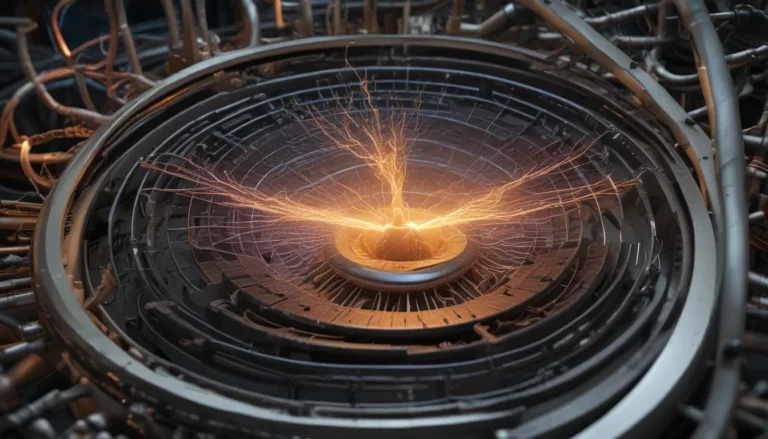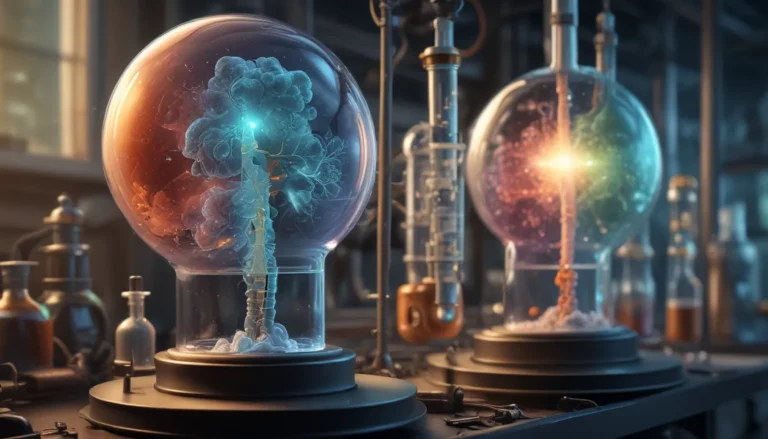A Note About Images: The images used in our articles are for illustration purposes only and may not exactly match the content. They are meant to engage readers, but the text should be relied upon for accurate information.
Potential energy is a fundamental concept in physics that surrounds us every day, yet often goes unnoticed. This invisible force plays a crucial role in shaping our world, from the simplest actions like lifting an object to the most complex systems in the universe. In this blog post, we’ll explore 13 fascinating facts about potential energy that will deepen your understanding of this captivating phenomenon.
Whether you’re a curious student, a science enthusiast, or simply someone who wants to learn more about the world around you, these facts will shed light on the importance of potential energy in our daily lives and beyond. So, let’s embark on this enlightening journey to uncover the mysteries of potential energy and its profound impact on our universe!

1. The Essence of Potential Energy
Potential energy is the stored energy an object possesses due to its position or condition. It’s like a hidden reservoir of power, waiting to be unleashed. This energy can be converted into other forms, such as kinetic energy (the energy of motion), making it a versatile and essential concept in physics.
2. Various Forms of Potential Energy
Potential energy comes in several forms, each with its unique characteristics:
Understanding these different types helps us grasp how energy is stored and transformed in various systems.
3. Gravitational Potential Energy: The Power of Height
One of the most common forms of potential energy is gravitational potential energy. It’s the energy an object gains when lifted above the ground. The higher an object is raised, the more gravitational potential energy it possesses. This relationship between height and energy is crucial in many natural and man-made systems.
4. Elastic Potential Energy: The Spring of Life
Elastic potential energy is stored in objects that can be stretched or compressed, like springs or rubber bands. The more these materials are deformed, the higher their potential energy. This form of energy is utilized in various applications, from simple toys to complex machinery.
5. Chemical Potential Energy: Nature’s Battery
Chemical potential energy is locked within the bonds of molecules. It’s released through chemical reactions, such as combustion or digestion. This form of potential energy powers many biological processes and is the basis for energy production in our bodies and various industrial applications.
6. Electric Potential Energy: The Charge Within
Electric potential energy is associated with the position of charged particles in an electric field. It’s the energy stored in electrical circuits and the static energy of charged objects. This form of potential energy is fundamental to modern technology and power systems.
7. The Dance of Potential and Kinetic Energy
There’s a fascinating interplay between potential and kinetic energy. As an object falls, its potential energy decreases while its kinetic energy increases. This constant exchange showcases the dynamic nature of energy transformation in motion.
8. The Law of Conservation of Energy
The law of conservation of energy states that energy cannot be created or destroyed, only converted from one form to another. This principle governs potential energy as well, emphasizing the perpetual nature of energy in the universe.
9. Real-World Applications of Potential Energy
Potential energy finds practical applications in various fields:
These examples demonstrate how understanding potential energy can lead to innovative solutions in engineering and technology.
10. Potential Energy in Earth’s Systems
Potential energy plays a crucial role in Earth’s natural systems. It drives processes like the water cycle, plate tectonics, and energy production from fossil fuels. The potential energy stored in our planet’s resources shapes our energy landscape and sustains vital ecosystems.
11. Potential Energy in Space Exploration
In space exploration, potential energy is a critical force that aids satellites and spacecraft in orbiting celestial bodies. The gravitational potential energy of planets and moons is harnessed to slingshot spacecraft and maintain stable orbits, showcasing the universal influence of this fundamental concept.
12. Calculating Potential Energy
The calculation of potential energy follows a simple formula:
Ep = m * g * h
Where:
This formula provides a mathematical framework for quantifying potential energy in various scenarios, allowing scientists and engineers to make precise calculations for their work.
13. Potential Energy in Renewable Energy Sources
Renewable energy sources heavily rely on potential energy. Wind turbines convert the kinetic energy of moving air (which originates from temperature differences caused by the sun’s energy) into electricity. Solar panels harness the potential energy of photons from the sun. Understanding and efficiently converting these forms of potential energy is key to developing sustainable energy solutions for our future.
Unlocking the Mysteries of Potential Energy
As we’ve explored these 13 fascinating facts about potential energy, it becomes clear how this fundamental concept permeates our daily lives and shapes the world around us. From the simplest actions like lifting a book to the complex workings of renewable energy systems, potential energy is a driving force behind countless phenomena.
By understanding potential energy, we gain valuable insights into the mechanics of our universe and open doors to innovative solutions in fields ranging from engineering to environmental science. As we continue to unravel the mysteries of potential energy, we pave the way for groundbreaking advancements that could revolutionize how we harness and utilize energy in the future.
FAQs About Potential Energy
Q1: What is the main difference between potential and kinetic energy?
A: Potential energy is stored energy based on an object’s position or condition, while kinetic energy is the energy of motion.
Q2: Can potential energy be negative?
A: Yes, potential energy can be negative depending on the chosen reference point, reflecting the relative nature of energy measurements.
Q3: How does potential energy relate to conservation of energy?
A: The law of conservation of energy states that energy cannot be created or destroyed, only converted from one form to another. Potential energy can be transformed into other types of energy, but the total energy in a closed system remains constant.
Q4: What are some everyday examples of potential energy?
A: Everyday examples include a book on a shelf (gravitational potential energy), a stretched rubber band (elastic potential energy), and the chemical energy in food (chemical potential energy).
Q5: How does potential energy contribute to sustainability?
A: Potential energy plays a crucial role in renewable energy sources, such as hydroelectric power and solar energy, contributing to more sustainable energy production methods.
By delving into these fascinating facts about potential energy, we’ve uncovered the hidden power that shapes our world. From the gravitational pull keeping planets in orbit to the elastic energy in a simple rubber band, potential energy is a fundamental force that continues to inspire scientific discovery and technological innovation. As we move forward, our understanding of potential energy will undoubtedly play a crucial role in addressing global challenges and shaping a more sustainable future.






